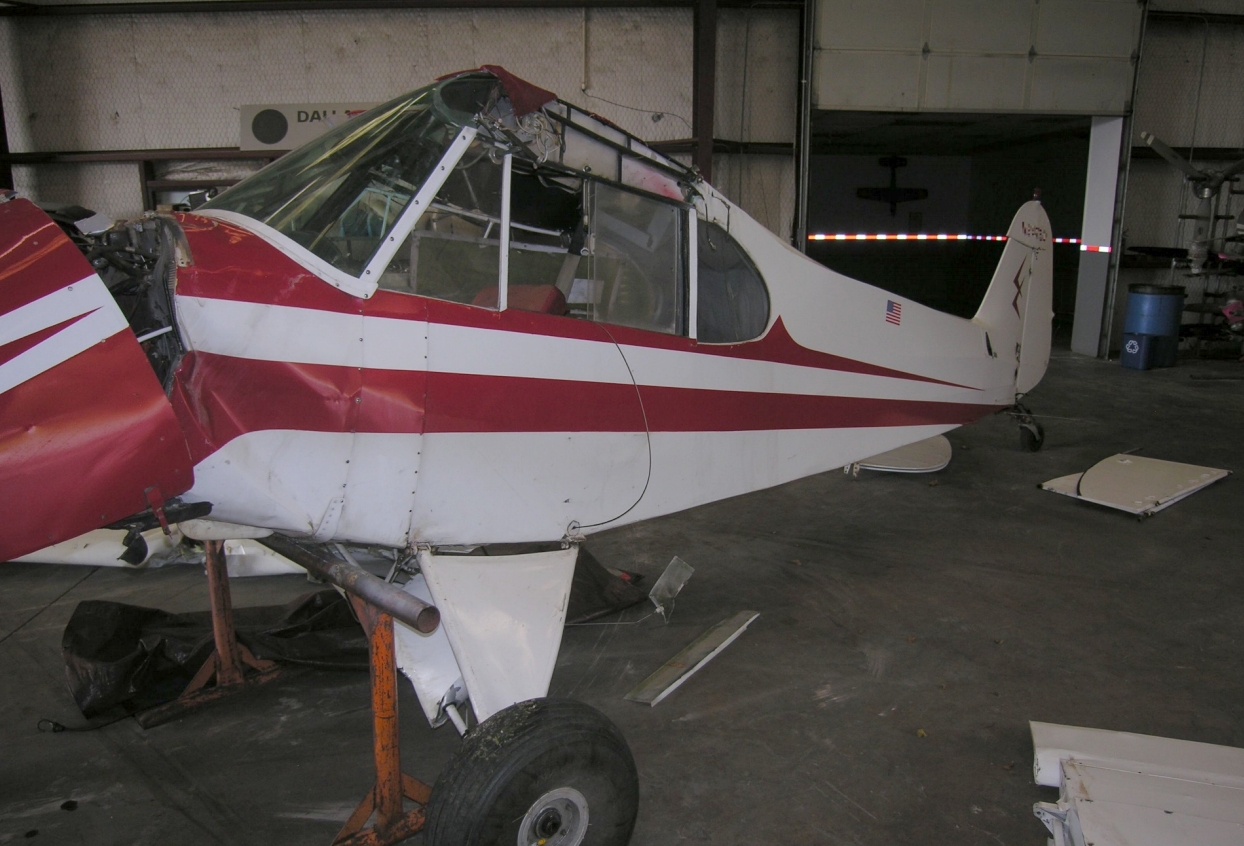
ASN Wikibase Occurrence # 190695
This information is added by users of ASN. Neither ASN nor the Flight Safety Foundation are responsible for the completeness or correctness of this information.
If you feel this information is incomplete or incorrect, you can submit corrected information.
| Date: | Saturday 15 October 2016 |
| Time: | 14:30 |
| Type: |  Piper PA-18-150 Super Cub |
| Owner/operator: | Private |
| Registration: | N9473D |
| MSN: | 18-7019 |
| Year of manufacture: | 1959 |
| Total airframe hrs: | 3655 hours |
| Engine model: | Lycoming O-320 SERIES |
| Fatalities: | Fatalities: 0 / Occupants: 1 |
| Aircraft damage: | Substantial |
| Category: | Accident |
| Location: | Jasper County, Jasper, TX -
 United States of America United States of America
|
| Phase: | Landing |
| Nature: | Private |
| Departure airport: | Jasper, TX |
| Jasper, TX | |
| Investigating agency: | NTSB |
| Confidence Rating: |
The private pilot departed on a local flight. Upon climbing to 1,000 ft, the engine experienced a partial loss of power and started to "miss." The pilot switched fuel tanks and âpumpedâ the throttle, but the engine did not respond. Unable to maintain altitude, he selected an area for the forced landing. The airplane came to rest wing down and nose low among several trees. Fuel was found at the accident site.
The airplane was later recovered and examined at a salvage facility. The examination noted several maintenance discrepancies; the wood under the battery box located in the aft section of the airplane appeared rotted, the engine muffler exhibited significant corrosion; 2 of the 4 cylindersâ exhaust and intake valve/rocker arms were improperly assembled; and both wing fuel tank gas caps were an aftermarket, non-vented type. A review of the airplane's maintenance records revealed that 1.49 hours had accumulated since the last annual inspection, and 46.36 hours had accumulated since an engine top overhaul. None of these discrepancies were noted in the inspection or overhaul logbook entries; however, none would have accounted for the loss of engine power.
A review of the temperature and dew point at the departure airport indicated that the airplane was operating in an environment conducive to the risk of carburetor ice formation at glide and cruise power settings; however, the airplane was climbing when the engine lost power, so the formation of carburetor ice was unlikely. Despite the maintenance discrepancies, the investigation could not identify a specific abnormality that accounted for the loss of engine power.
Probable Cause: A partial loss of engine power for reasons that could not be determined, because an examination of the airplane did not identify a specific reason for the loss of engine power.
Accident investigation:
 |
|
Sources:
NTSB
FAA register: http://registry.faa.gov/aircraftinquiry/NNum_Results.aspx?NNumbertxt=9473D
Location
Images:

Photo: NTSB
Revision history:
| Date/time | Contributor | Updates |
|---|---|---|
| 16-Oct-2016 15:32 | Geno | Added |
| 11-Nov-2018 08:32 | ASN Update Bot | Updated [Time, Nature, Departure airport, Destination airport, Source, Narrative, Accident report, ] |
| 11-Nov-2018 09:54 | harro | Updated [Source, Narrative, Photo] |
Corrections or additions? ... Edit this accident description
The Aviation Safety Network is an exclusive service provided by:


 ©2024 Flight Safety Foundation
©2024 Flight Safety Foundation